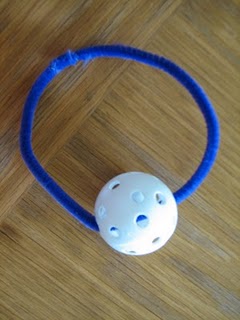Kim liked my idea of measuring foam pipe covers, but asked,
“ I am trying to tie this to my decimal study...
Got ideas?
I started with yarn lengths... but the pipes would be BETTER! I might use meter sticks...You've got me thinking!”
Got ideas?
I started with yarn lengths... but the pipes would be BETTER! I might use meter sticks...You've got me thinking!”
(Background Information: A meter stick is a meter long, and is marked off in decimeters (there are 10 of these per meter), centimeters (10 of these per decimeter and 100 per meter) and millimeters (there are 10 of these per centimeter and 1,000 of these per meter). As the markings get thinner and closer together, they indicate smaller measurements. Usually decimeters are boldest, followed by centimeters and then millimeters. Decimeters and centimeters will be numbered, but millimeters likely will not.)
I love this metric ruler by Spectrum (Canada). It looks like a triangular prism and breaks down the measurements smaller and smaller.
This side has increments in decimeters with white and orange spaces indicating each separate decimeter.
This side has increments in centimeters and decimeters, with the decimeter featured in bold print.
This side combines them all…decimeters, centimeters, and millimeters.
So when your students record the measurement of the foam pipe covers they will follow this order:
1. First they will note how many decimeters are encompassed by the object and write that number down.
2. Then count out the centimeters past the last decimeter. Write that number down.
3. Finally count out the millimeters past the last centimeter. Write that number down.
Then you will be able to read the measurement in its decimal form. For example, if the object you measured extended past the second decimeter, then to 3 centimeters and then to 7 millimeters, your final measurement will be 2 decimeters, 3 centimeters and 7 millimeters. You can write this as a decimal expression of a meter by writing it 0.237 meter.
Speaking of measuring...
check out these Multigrade TOOLS!
Let's consider a simple tool like a ruler when you are teaching a 1/2 Multigrade class. For the 1st graders, I would suggest providing a ruler that clearly shows 1 inch increments only. They usually have to measure "to the nearest inch" or "inch", so don't confuse them with all those unnecessary divisions on their ruler.
2nd graders need a tool that clearly shows inches and half-inches...
because they are ready to move on.
One of my favorite rulers only shows increments in fourths, and can be used with 3rd and 4th graders.
Help your students to LOVE to measure... by providing the right tool.
 |
| Wouldn't it be wonderful to have a class set of these rulers in your classroom? (They are made in the USA too!) Deborah |
























